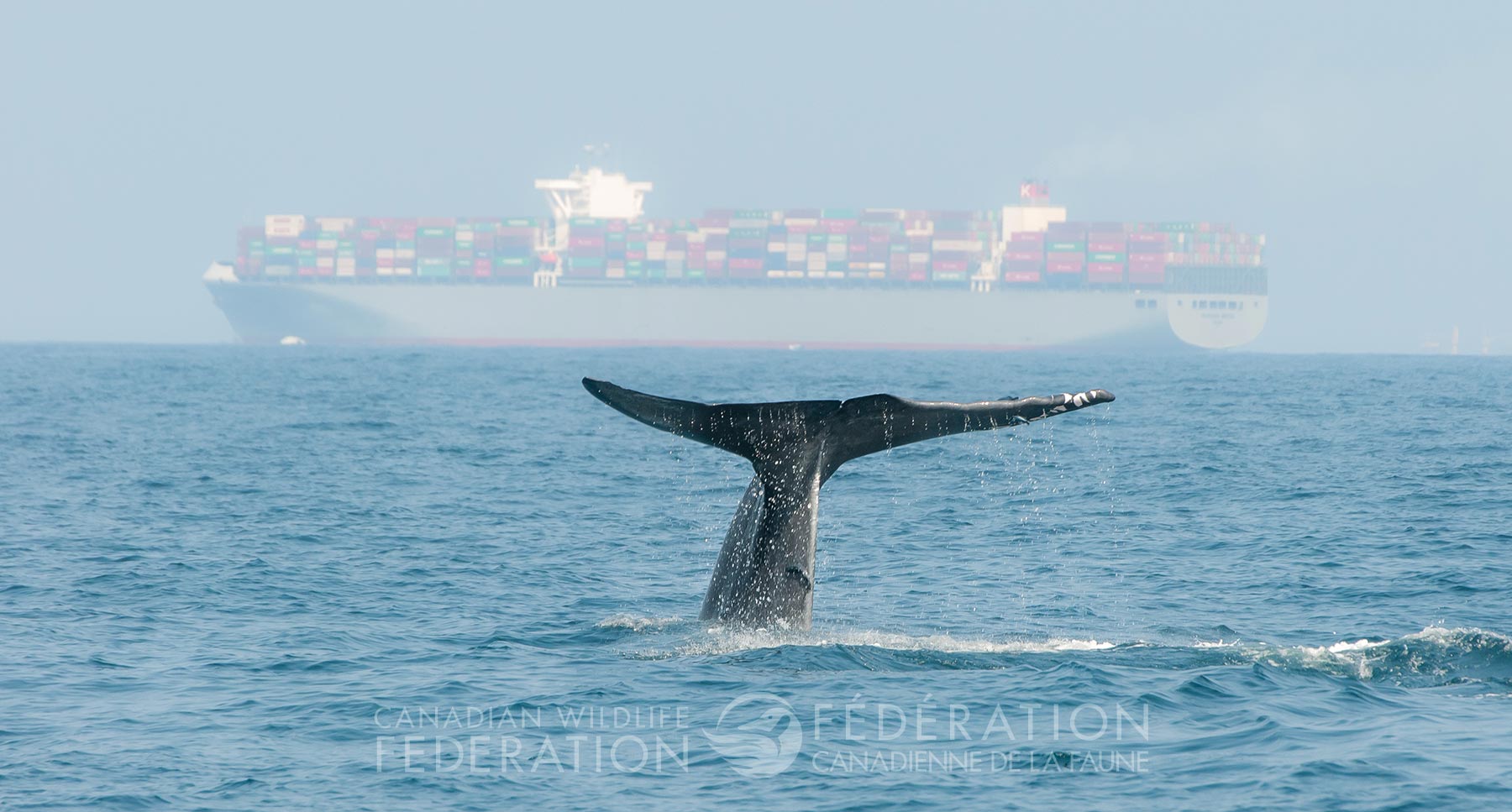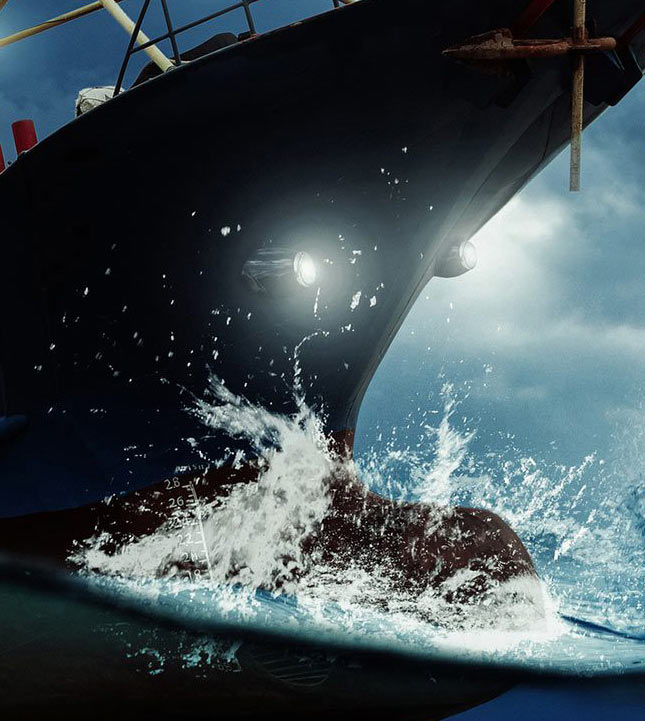Big Impact
Studies have demonstrated conclusively that any time a whale is struck by a boat, no matter how small, the whale suffers. It is as simple as that. The faster the vessel is travelling, the greater the trauma. Collisions between whales and ships first became an issue late in the 1800s when technology allowed ships to start reaching speeds above 13 knots (24 kmph). It wasn’t until the 1950s, with faster and larger ships — and the exponential increase in demand — that the problem was recognized, though little was done.
Today it is a crisis; thousands of whales die every year. Most fatal or serious whale injuries caused by ships 20 metres and more in length and travelling at speeds of at least 14 knots. While routine speeds for even the largest ships at sea today reach as high as 25 knots, studies have demonstrated conclusively that any collision at speeds over 10 knots are likely to kill and over 18 knots are certain to be lethal. Baleen whales are at greater risk of being struck by ships than other marine mammals because of their large body size and because they spend a lot of time at the surface, feeding and resting and seem largely oblivious to approaching vessels.
While researchers seek technological solutions for the future, the most reliable response is and likely will always be separation — that is, keeping whales and ships away from each other by restricting shipping traffic. Of course, to do that requires a clear picture of where whales are.
Unfortunately, their whereabouts are notoriously hard to predict, and live tracking of whales as they move is no easier.
Bottom Line
Despite significant efforts by the Government of Canada to reduce the injury and death of whales due to collisions with commercial ships and other vessels, whales continue to be killed in Canadian waters. Speed restrictions and shipping lanes established in the Gulf of St. Lawrence, for example, have helped, but are not enough. If we want these majestic animals to survive, we need to take more drastic measures.

Did You Know?
42%
Approximate percentage of Canada’s marine species that are in danger of extinction.
10
The number of North Atlantic right whale calves born in 2020. Sadly, two of them died due to vessel strikes.
45,000
The number of Canadians in 2020 who signed the petition to the Canadian government in order to advocate for change.
What We are Doing
Biophysical Model of Whale-vessel Collisions
In partnership with Dalhousie University, the Canadian Wildlife Federation is striving to better understand the impact that ocean-going vessels have when they strike whales. The goal of this project is to identify the degree of injury whales incur after a vessel collision and to determine whether vessel size impacts the severity of the resulting injury.
With data provided by MERIDIAN, CWF is using a biophysical model of whale-vessel collisions to estimate lethality of a strike, to understand the risk contributed by different vessel types, and use this information to examine the effectiveness of these management measures at reducing the likelihood of vessel strikes. The CWF model provides a tool for scientists and managers to better understand what occurs to a whale during and after a collision event. The information derived from the model can inform current speed restrictions and support the idea of a more conservative speed.


Vessel Strike Risk Assessment
CWF staff conducted a risk assessment of vessel strikes on North Atlantic Right Whales in the Gulf of St. Lawrence between 2015 to 2023. The study considered three types of risk: risk of encounter, risk of lethality and cumulative risk of lethal vessel strike.
From 2015 to 2023, the relative risk of a North Atlantic Right Whale crossing paths with a vessel generally increased. The rise is largely due to the growing number of vessels in areas where whales are likely to be present. However, in areas where vessels have been restricted due to whale presence since 2020, the likelihood of a vessel strike has dropped from 23.2 per cent to 15.8 per cent.
Researchers also evaluated how effective speed reductions have been. Although average vessel speeds have decreased, the typical two to three knot reduction was not enough to meaningfully lower the risk of lethality for North Atlantic Right Whales. In most zones, the probability of a lethal injury remained high — near or above 70 per cent—and about 60 per cent in restricted areas. For large vessels traveling at 10 knots, the probability of causing a lethal injury is still 81 per cent.
CWF staff assessed the overall risk of a whale both encountering a vessel and sustaining lethal injuries. They observed an increasing trend from 2015 to 2017, with 2022 and 2023 showing the highest risk. While cumulative risk decreased in seasonal and restricted areas, the restricted area saw the most significant decline—from 21.1 per cent to 13.9 per cent. However, the small reduction in lethality from slower speeds was offset by an increase in the number of vessel transits. As a result, management measures helped prevent a major rise in risk but did not significantly reduce the overall threat of vessel strikes.
The study also found that cargo and fishing vessels were the largest contributors to all three types of risk. Cargo vessels accounted for between 35.6 per cent and 41.1 per cent of the risk, while fishing vessels contributed between 23 per cent and 24.6 per cent. Larger vessels—such as cargo ships, cruise ships and tankers—contributed more to the risk of lethality due to their size and speed. In contrast, smaller vessels—including fishing, government/research and sailing vessels — played a greater role in the risk of encounter.
What YOU Can Do
Donate
Learn More About Our Coasts and Oceans
Become a Part of The Watch
- 0
- 1
- 2
- 3












